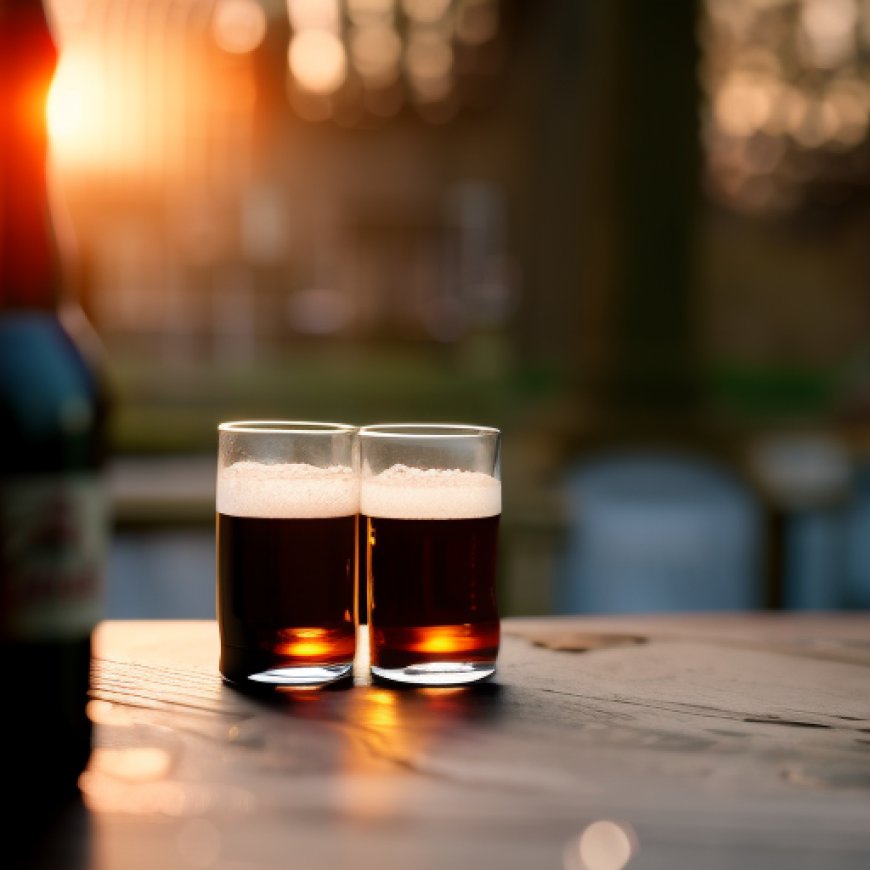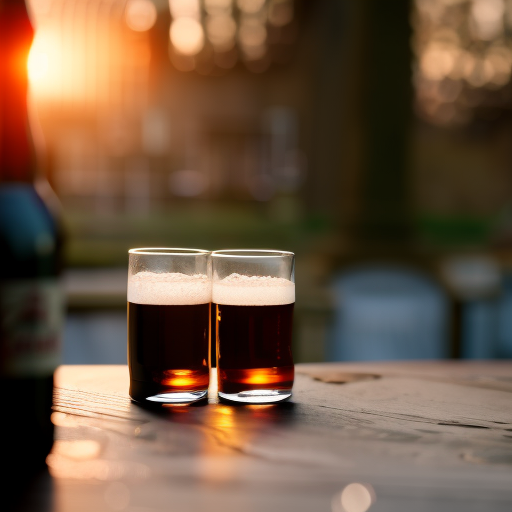Would You Drink Wastewater? What if It Was Beer?
Would You Drink Wastewater? What if It Was Beer? The New York Times


Epic OneWater Brew: A Sustainable Solution for Water Reuse
Epic OneWater Brew looks like your classic hipster craft beer.
The can has a sleek design with the silhouette of a city skyline, and it cracks open with a satisfying hiss. The beer, a Kölsch, has a crisp golden hue and a signature fruity taste.
But there is one big difference: It is made with recycled wastewater.
Epic OneWater Brew, the product of a partnership between a wastewater technology start-up and a Bay Area craft brewery, is made with treated shower and laundry water collected from a luxury high-rise apartment building in San Francisco. And it’s not the only beer of its kind.
As water sources, particularly in the western United States, dry up from overuse, drought and climate change, supporters of direct potable reuse — the use of treated wastewater in the drinking water supply — are pitching it as part of the solution. Increasingly, they are turning to beer as a way of getting people beyond the “ick factor” that has been a hurdle to its broader acceptance.
If people are reluctant to drink recycled wastewater, the thinking goes, perhaps they could be enticed if it were served in the form of a frosty cold one.
The Untapped Potential of Water Reuse
Aaron Tartakovsky, the co-founder and chief executive of Epic Cleantec, the wastewater technology company that worked with Devil’s Canyon Brewing Company of San Carlos, Calif., to create Epic OneWater Brew, said he wanted to make the beer to show the “untapped potential” of water reuse.
“We live in what we like to call here at Epic a ‘flush-and-forget’ society,” he said. “We have this innate yuck factor when it comes to talking about wastewater, or sewage, and all of these other sort of yuck-factor topics.”
Using Beer to Overcome the “Ick Factor”
Some Western and Southwestern cities that are struggling to manage the challenges of population growth and strained water supplies have held competitions for craft breweries to produce signature beers using recycled wastewater. California, Idaho and Arizona are among the states that have worked with local breweries to raise awareness of the need for water reuse.
Scottsdale, Ariz., which has watered nearly two dozen golf courses with treated wastewater since the 1990s, received a state permit in 2019 allowing for direct potable reuse of its purified recycled water. Scottsdale isn’t currently sending that water into the drinking supply, but Brian Biesemeyer, the executive director of Scottsdale Water, said that could change in two or three years.
Changing Perceptions Through Beer
To help the public get their heads around the concept of drinking treated wastewater, Scottsdale Water invited 10 breweries to make beer using water from the city’s advanced water treatment plant and serve it at an arts festival in 2019. The beer tents were accompanied by an information booth that explained the recycling process.
While people at first went wide-eyed at the prospect of drinking treated wastewater, Mr. Biesemeyer said, many were eager to sample the beers after a tutorial on how clean and safe the treated water is.
“We found the beer event to be a fun way to kind of get people over that fear,” he said.
Desert Monks Brewing Company of Gilbert, Ariz., which took part in the Scottsdale challenge, has embraced the concept and has brewed two beers with Scottsdale’s treated wastewater. Sonoran Mist, a lager, has quickly become the brewery’s top seller, and a Hefeweizen will be added to the lineup next month.
Embracing Water Reuse in Brewing
Two of the brewery’s owners, Sommer Decker and John Decker, believe Desert Monks is the first brewery in the country to consistently offer beer made with recycled wastewater on tap.
“We’re a small brewery, so being able to get this ultrapurified water from a large-scale entity gave us water that was more purified than we can get from our own systems at this point,” Ms. Decker said.
Getting over the ‘ick factor’
Efforts to promote the wider use of recycled drinking water have suffered from a perception problem, amplified by detractors who have denounced the process as “toilet to tap.” But researchers at Stanford University found last year that recycled wastewater is safe to drink and also less toxic than other tap water sources
SDGs, Targets, and Indicators
-
SDGs Addressed or Connected:
- SDG 6: Clean Water and Sanitation
- SDG 12: Responsible Consumption and Production
- SDG 13: Climate Action
-
Specific Targets:
- SDG 6.3: By 2030, improve water quality by reducing pollution, eliminating dumping and minimizing release of hazardous chemicals and materials, halving the proportion of untreated wastewater and substantially increasing recycling and safe reuse globally.
- SDG 12.4: By 2020, achieve the environmentally sound management of chemicals and all wastes throughout their life cycle, in accordance with agreed international frameworks, and significantly reduce their release to air, water and soil in order to minimize their adverse impacts on human health and the environment.
- SDG 13.1: Strengthen resilience and adaptive capacity to climate-related hazards and natural disasters in all countries.
-
Indicators:
- Indicator for SDG 6.3: Proportion of wastewater safely treated and reused.
- Indicator for SDG 12.4: Amount of hazardous chemicals and materials released to air, water, and soil.
- Indicator for SDG 13.1: Number of deaths, missing persons, and directly affected persons attributed to disasters per 100,000 population.
Table: SDGs, Targets, and Indicators
| SDGs | Targets | Indicators |
|---|---|---|
| SDG 6: Clean Water and Sanitation | Target 6.3: By 2030, improve water quality by reducing pollution, eliminating dumping and minimizing release of hazardous chemicals and materials, halving the proportion of untreated wastewater and substantially increasing recycling and safe reuse globally. | Indicator: Proportion of wastewater safely treated and reused. |
| SDG 12: Responsible Consumption and Production | Target 12.4: By 2020, achieve the environmentally sound management of chemicals and all wastes throughout their life cycle, in accordance with agreed international frameworks, and significantly reduce their release to air, water and soil in order to minimize their adverse impacts on human health and the environment. | Indicator: Amount of hazardous chemicals and materials released to air, water, and soil. |
| SDG 13: Climate Action | Target 13.1: Strengthen resilience and adaptive capacity to climate-related hazards and natural disasters in all countries. | Indicator: Number of deaths, missing persons, and directly affected persons attributed to disasters per 100,000 population. |
Explanation:
1. The issues discussed in the article are connected to SDG 6 (Clean Water and Sanitation), SDG 12 (Responsible Consumption and Production), and SDG 13 (Climate Action). The article highlights the use of treated wastewater in beer production as a solution to water scarcity and climate change.
2. Based on the article’s content, the specific targets that can be identified are SDG 6.3, SDG 12.4, and SDG 13.1. These targets focus on improving water quality, reducing pollution, managing chemicals and wastes, and strengthening resilience to climate-related hazards.
3. The article mentions the proportion of wastewater safely treated and reused as an indicator for SDG 6.3. It also implies the release of hazardous chemicals and materials to air, water, and soil as an indicator for SDG 12.4. Although not explicitly mentioned, the article discusses the need to strengthen resilience to climate-related hazards, which can be measured by the number of deaths, missing persons, and directly affected persons attributed to disasters per 100,000 population (indicator for SDG 13.1).
Behold! This splendid article springs forth from the wellspring of knowledge, shaped by a wondrous proprietary AI technology that delved into a vast ocean of data, illuminating the path towards the Sustainable Development Goals. Remember that all rights are reserved by SDG Investors LLC, empowering us to champion progress together.
Source: nytimes.com

Join us, as fellow seekers of change, on a transformative journey at https://sdgtalks.ai/welcome, where you can become a member and actively contribute to shaping a brighter future.







